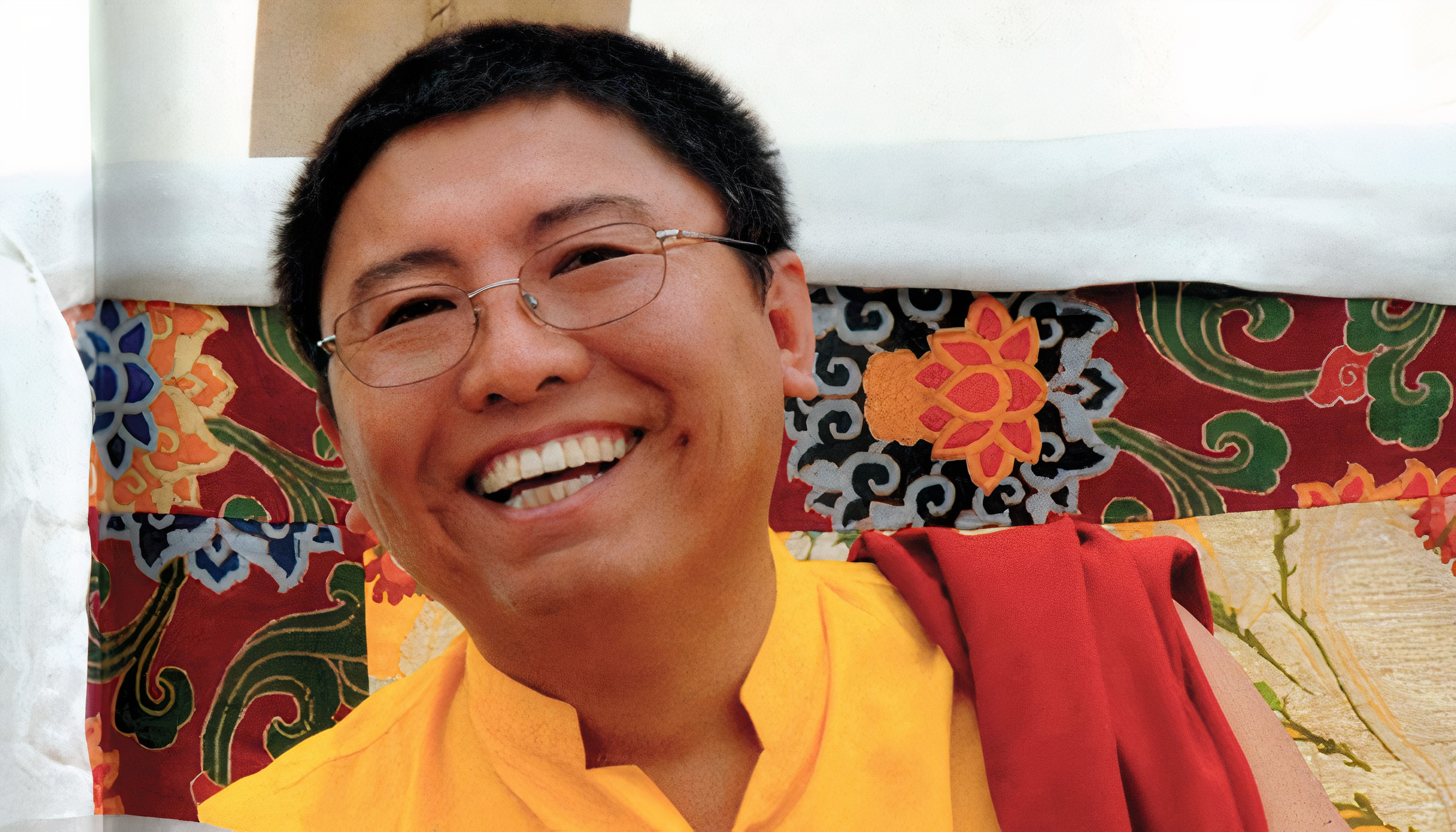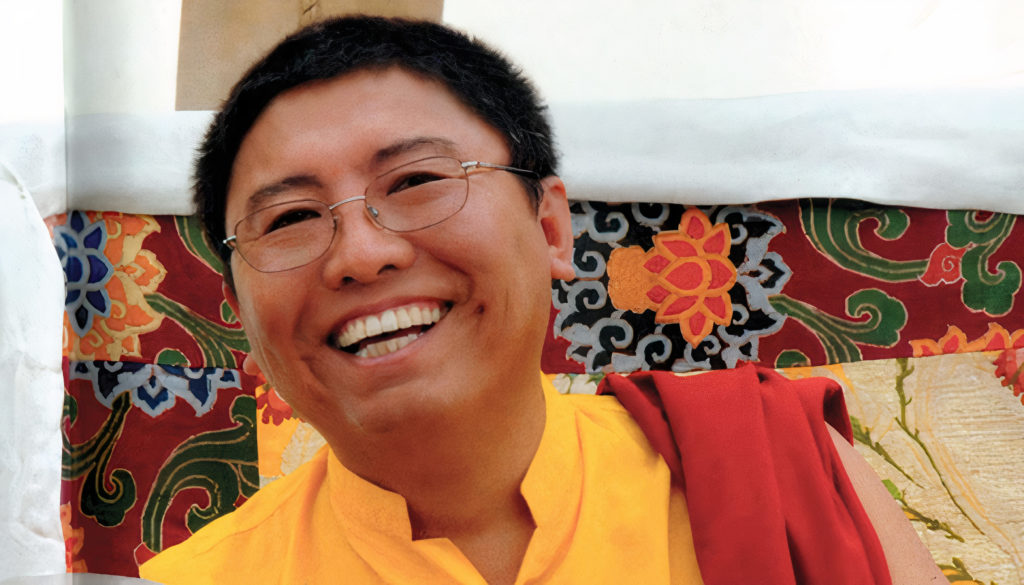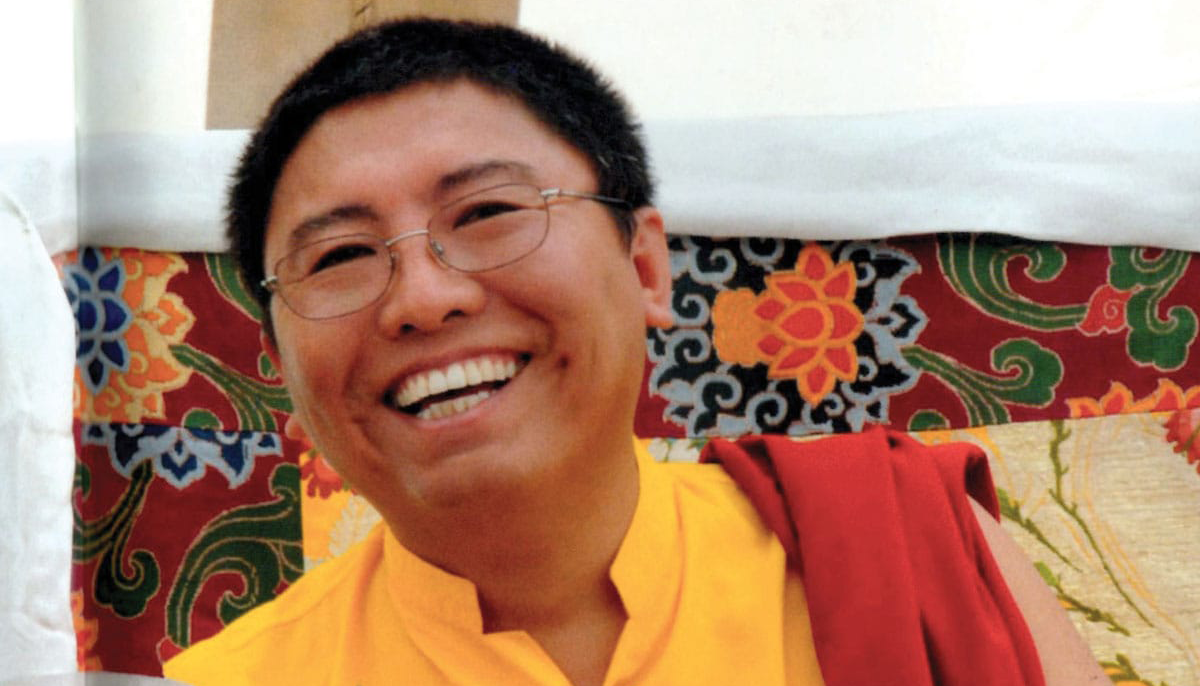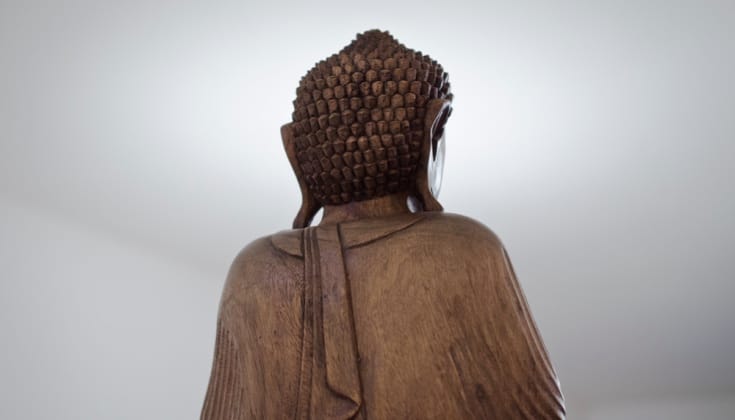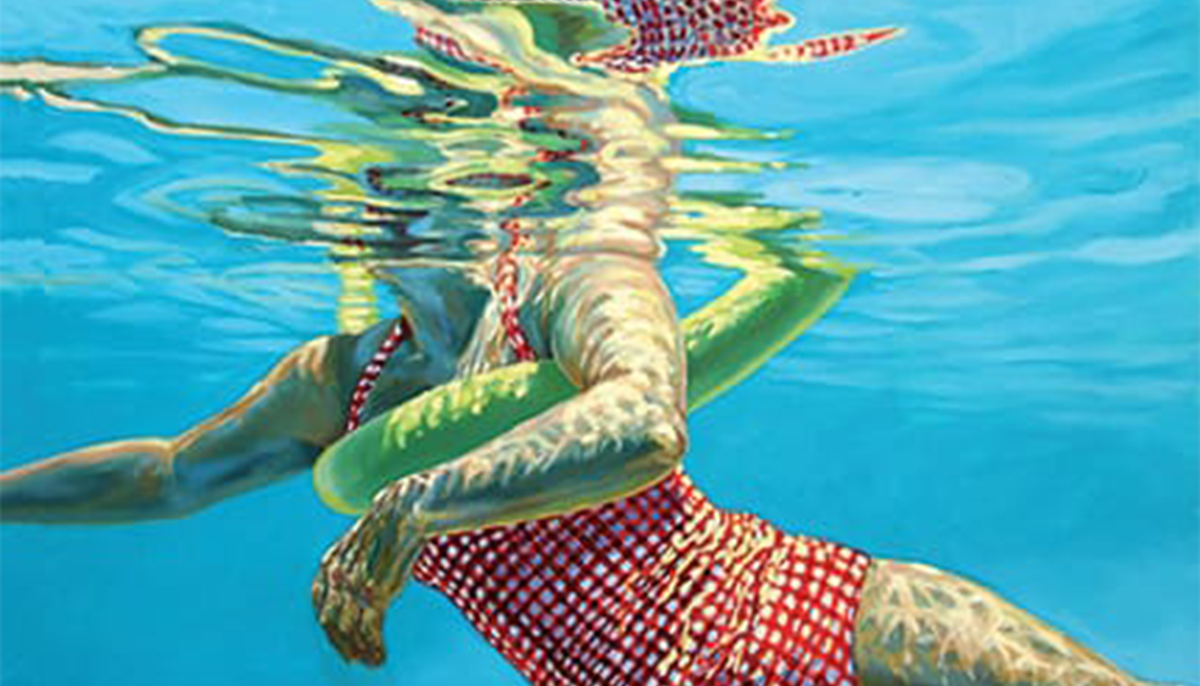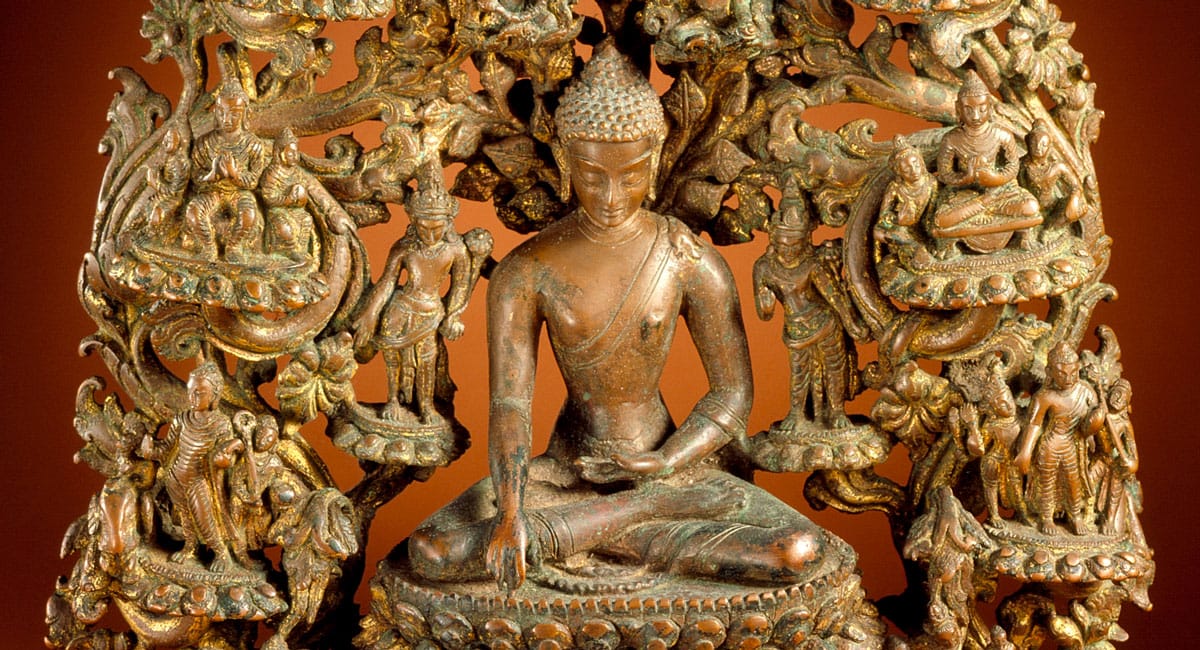Conveying Buddhist wisdom to modern audiences, Tsoknyi Rinpoche is an uncommon teacher whose plainspoken guidance on becoming carefree and forgiving oneself serves the novice meditator as well as the seasoned practitioner. Enjoy this introduction to the teachings and meditations of Tsoknyi Rinpoche.
Drawing on everyday experience and deploying homespun metaphors, Tsoknyi Rinpoche provides a solid connection between the ancient wisdom of Tibetan Buddhism and contemporary meditation practice with a focus on freeing one’s mind from the worries and habits that cloud insight into our true nature.
“That’s the main point of the Buddhist teachings,” he encourages in his teaching The More Carefree You Are, the Better Your Dharma Practice. “Be aware of your own mind. Let it be undisturbed and free of confusion, because only then can you be of help to others.”
“As a young child I used to sit on my grandfather’s lap while he meditated,” remembers Rinpoche in his teaching, This Is My Mind, Luminous and Empty. “At two or three years old, of course, I had no idea what meditation involved. My grandfather didn’t give me instructions and didn’t speak to me about his own experience. Yet, as I sat with him I felt a sense of deep comfort, together with a kind of childlike fascination with whatever was going on around me. I felt myself becoming aware of something becoming brighter and more intense in my own body, my own mind, my own heart.”
Early in life, he was provided with the education of a tulku — a reborn lama. But his story took a turn when he left the monastery to marry and start a family. Over time, he was drawn back to his heritage of Buddhist instruction, bringing with him a profound understanding of the balance required between maintaining a practice and the responsibilities of a family man.
Tsoknyi developed into an insightful teacher of meditation. His teachings speak to those who long to be able to meet the various challenges of our daily lives with self-assurance and calm. Too often beginner practitioners will beat themselves up for stumbling in their meditation practice. Rinpoche’s approach meets such feelings with compassion, championing simplicity and openness over a perfect practice, recounting his own efforts to find the balance between life’s pressures and cultivating the carefree self.
Teachings
The Natural Liberation of Habits
When you recognize the true nature of mind, says Dzogchen master Tsoknyi Rinpoche, all habitual patterns are naturally liberated in the space of wisdom. That includes the ultimate habit known as samsara.
The ultimate habitual pattern is samsara itself—the wheel of habitual cyclic existence that causes all your suffering. The karma that drives the wheel—the three poisons of attachment, aggression, and ignorance—are actually deep-seated habits of mind.
When you finally get tired of unconsciously participating in the daily show of habitual samsaric programming, what can you do to change it? Buddhism teaches three basic ways to cut your ties to samsara, once you have decided this is something you really need and want to do.
The More Carefree You Are, the Better Your Dharma Practice
We practice in order to liberate ourselves, but we can make ourselves crazy in the process. Tsoknyi Rinpoche teaches us how to temper our expectations and experience more contentment.
It’s actually fine to be happy and carefree. The more carefree you are from deep within, the better your dharma practice is.
Carefree means being wide open from within, not constricted. Carefree doesn’t mean careless, that you are sloppy or that you don’t care about others. It’s not like you don’t have compassion or are unfriendly. Carefree is being really simple, from the inside. You need to be relaxed, yet without stupidity. Sometimes people relax like this: (Rinpoche lies back limply with eyes half-closed and a vacant expression). Especially around the swimming pool! You have a swim, then you climb out of the pool and lay down with your hat, sunglasses, and maybe a cold beer.
Fearless Simplicity
An excerpt from “Fearless Simplicity,” by Tsokyni Rinpoche, from In the Face of Fear: Buddhist Wisdom for Challenging Times, edited by Barry Boyce and the editors of Lion’s Roar.
Most people I meet are to some extent afraid of themselves. Often they say something like, “Well, maybe I can handle it, maybe I cannot. Maybe I should listen to him, maybe I shouldn’t. Maybe I can’t take it.”
All this doubt, all this reluctance, is based on fear, fear of not being able to take it. “If I do this, if I end up in that situation, maybe I couldn’t stand it. Maybe I don’t know how to deal with it, maybe it will be too much. I’d better not.” There is a certain timidity in that fear, and this feeling of dread is a way of imprisoning oneself inside a lack of confidence. Once we confine ourselves to that prison of timidity, ego will take the key, lock the door, and put the key in its pocket. We become prisoners of ego.
The Compassionate Attitude of Bodhichitta
The most important thing in spiritual practice, says Tsoknyi Rinpoche, is motivation. And the most powerful motivation is the wish to free all beings from suffering.
Whether our dharma practice will progress in the right direction depends on our attitude, our intention, our motivation. Motivation is extremely important: it is what everything stands or falls with. This is true not only in spiritual practice but in whatever we set out to do. Therefore, in Buddhist practice it is of utmost importance to continually correct and improve our attitude.
Meditations
Recognizing Clarity: A Dzogchen Meditation
Dzogchen master Tsoknyi Rinpoche shares a meditation to encourage clarity of mind.
Clarity is the capacity to recognize and distinguish the unlimited variety of thoughts, feelings, sensations, and appearances that continually emerge in the mind. It is also called luminosity. Without clarity, we wouldn’t be able to recognize or identify any aspect of our experience. To recognize clarity, do this meditation practice using a physical object as the focus of your attention.
How to Drop Into Your Body & Feelings
A short drop-in practice from Tsoknyi Rinpoche.
Relax deeply. Don’t hold onto anything. Completely let go of thinking and judging mind while gently maintaining the clarity and knowing aspects of mind.
Go Deeper
This Is My Mind, Luminous and Empty
According to Vajrayana Buddhism, the fast track to awakening is to look directly at your own mind and discover its true nature. Tsoknyi Rinpoche shows us how to experience two of mind’s most profound qualities.
As a young child I used to sit on my grandfather’s lap while he meditated. At two or three years old, of course, I had no idea what meditation involved. My grandfather didn’t give me instructions and didn’t speak to me about his own experience. Yet, as I sat with him I felt a sense of deep comfort, together with a kind of childlike fascination with whatever was going on around me. I felt myself becoming aware of something becoming brighter and more intense in my own body, my own mind, my own heart.
Two Truths—Indivisible
When we enter the path, we are working at the level of relative truth, and with practice we may gain insight into the absolute. But we don’t enter the final stage of practice, says Tsoknyi Rinpoche, until we realize these truths were never separate.
The art and beauty of practicing dharma becomes more and more subtle and profound as we learn the dance of the relative and absolute truths. Since the natural state is timelessly present in both, their indivisibility or inseparability is like a single thread interwoven throughout all the teachings, functioning at every level and stage of practice.
To Enter the Vajrayana Start at the Beginning
“It doesn’t make sense to grab at the highest teachings and reject the rest,” says Tsoknyi Rinpoche in this teaching on vajrayana from the Lion’s Roar archive. “It is the kindness of the buddhas to provide us with a complete path, and the preliminary practices are part of that path.”
All great teachers of the past have taught the identical message: “Gather the accumulations, purify the obscurations, and receive the blessings of a qualified master.” In the tradition I represent, the preliminary practices are very, very important. I don’t think that the buddhas and all the past masters have created them just to lead us astray. The vajrayana vehicle contains many methods and few hardships to reach enlightenment. Some of the easiest are devotion and compassion, along with the recognition of mind nature. Combine these with the preliminaries and you will progress quickly.
